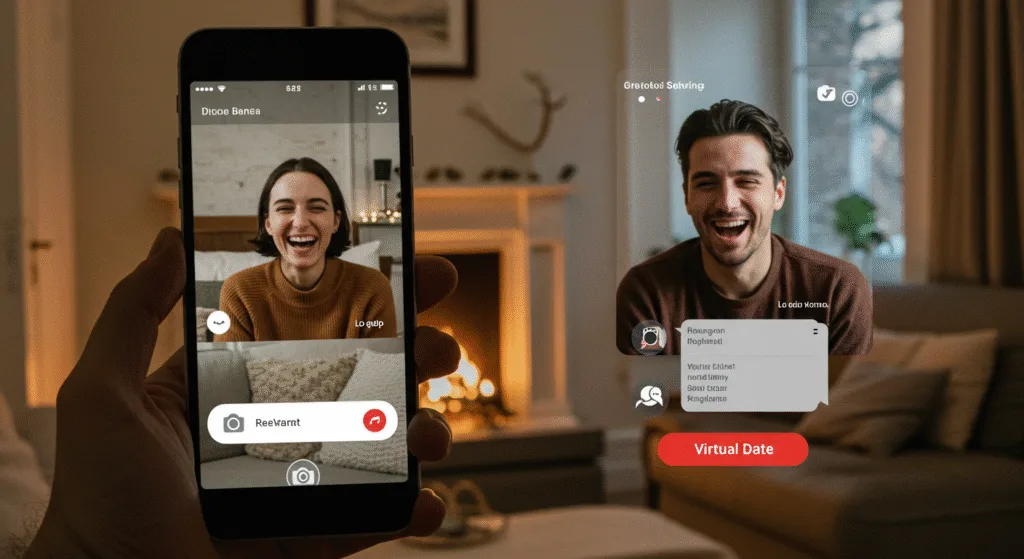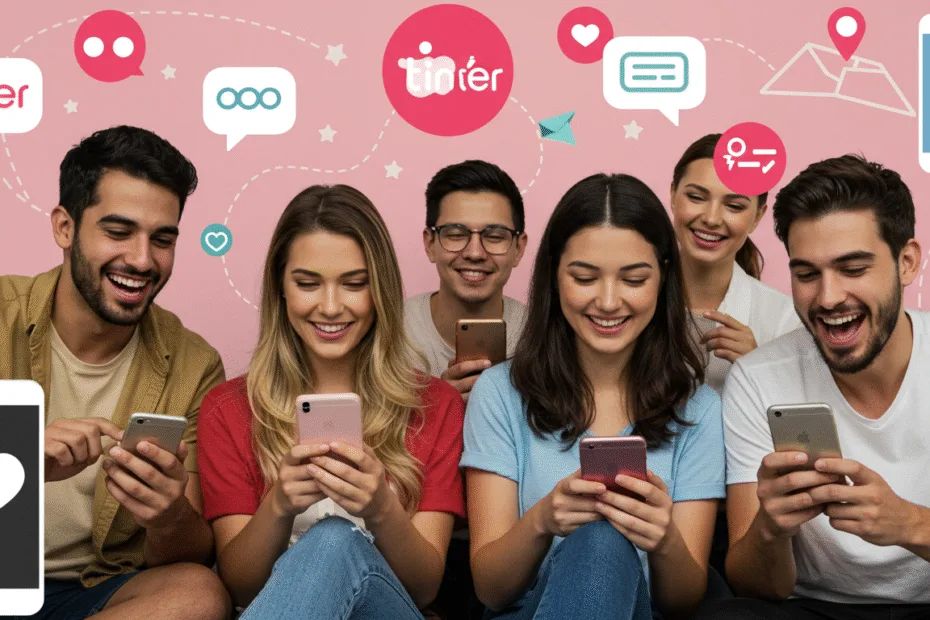Explore the latest online dating trends shaping modern relationships. Learn how apps are changing love, from AI matchmaking to video dating.
Introduction: How Technology is Reshaping Modern Romance
In the past decade, the landscape of romantic relationships has undergone a seismic shift. What was once considered unconventional—meeting a partner through an app—is now the norm. According to recent data, over 40% of Americans have used a dating app at least once, and nearly one-third of all new relationships begin online.
The rise of smartphones, social media integration, and artificial intelligence has transformed the way people connect, flirt, and fall in love. Today’s dating scene is more dynamic than ever, shaped by evolving cultural norms, generational differences, and technological innovation.
This article explores the most significant modern dating trends and delves into how online dating apps are redefining the rules of romance in the digital age.
The Evolution of Online Dating
Dating didn’t always start with a swipe right. In fact, online dating began in the early 1960s when Harvard students created a computer-based system to match individuals based on personality questionnaires. Fast forward to the 2000s, platforms like Match.com and eHarmony introduced algorithm-driven compatibility tests that aimed to find meaningful matches.
By the time Tinder launched in 2012, dating had become mobile-first. The introduction of geolocation and swipe mechanics revolutionized the speed and accessibility of meeting potential partners. Since then, the market has exploded with niche apps targeting specific communities, interests, and relationship goals.
Today, dating apps are not just for singles looking for romance—they’re also used by people exploring friendships, casual encounters, polyamory, and even business networking.
Top Modern Dating Trends in 2025
As we move further into the digital era, several key trends are emerging in the world of online dating:
1. AI-Powered Matchmaking
Artificial Intelligence is no longer science fiction—it’s being integrated into dating platforms to offer smarter, more personalized matches. AI algorithms analyze user behavior, preferences, and even conversation patterns to suggest compatible partners.
Apps like Hinge and Coffee Meets Bagel are already using machine learning to refine their matching systems, and future versions may include predictive analytics to determine long-term compatibility.
2. Video Dating and Virtual First Dates
Post-pandemic, virtual communication became the norm. Dating apps responded by adding live video features, allowing users to meet face-to-face before deciding to meet in person.
Platforms like Bumble introduced “Bumble Live,” while others offer virtual date rooms where couples can play games or watch movies together. This trend is expected to grow as remote interactions continue to shape social norms.
3. Niche Dating Apps for Specific Communities
One-size-fits-all dating isn’t cutting it anymore. Users are increasingly turning to niche apps tailored to their lifestyles, values, and identities. Examples include:
- Feeld for open relationships and kink communities
- Raya for creatives and influencers
- JDate and Christian Mingle for religious affiliations
- Her for LGBTQ+ women
- Muslima for Muslim singles
These specialized platforms allow users to connect with like-minded individuals who share similar beliefs and interests.
4. Enhanced Safety Features
With growing concerns about catfishing and online harassment, dating apps are prioritizing user safety. Features such as ID verification, photo validation, and panic buttons are becoming standard.
For instance, Tinder offers real-time location sharing during dates, while Bumble allows users to blur sensitive information until they feel comfortable revealing it.
5. Rise of “Slow Dating”
In contrast to fast-paced swiping, slow dating encourages deeper connections through thoughtful profiles, curated questions, and extended conversations before exchanging photos or phone numbers.
Apps like Slowly and Luxy promote this philosophy, appealing to users who are tired of superficial interactions and seeking meaningful relationships.
Generational Differences in Online Dating
Different generations approach dating apps in unique ways, influenced by their life stages, expectations, and tech familiarity.
Gen Z (Born 1997–2012)
Gen Z users are the most tech-savvy and often prefer short-form content, gamified experiences, and visual storytelling. They’re drawn to apps like Snapchat integrations, TikTok-style videos, and interactive quizzes.
They value authenticity and transparency, often avoiding traditional dating sites in favor of platforms that emphasize self-expression and inclusivity.
Millennials (Born 1981–1996)
Millennials were among the first to adopt dating apps en masse. They tend to be more pragmatic, using apps for both casual and serious relationships.
Many millennials are also navigating co-parenting, divorce, or blended families, leading them to seek platforms that cater to mature audiences.
Gen X and Baby Boomers (Born 1965–1980)
Older generations are increasingly embracing online dating, especially after major life events like retirement or loss of a spouse.
Apps like OurTime and SilverSingles are designed specifically for seniors, offering simplified interfaces and community-building features.

The Role of Social Media in Modern Dating
Social media and dating have become deeply intertwined. Platforms like Instagram, Facebook, and TikTok are not only spaces for self-expression but also tools for vetting potential partners.
Users often check each other’s profiles before agreeing to a date, and many relationships begin with mutual follows or DM exchanges.
Some dating apps, like Instagram’s “Add Yours” sticker feature, allow users to express interest publicly or privately, blending dating with everyday social interaction.
However, this integration also raises concerns about privacy, comparison culture, and the pressure to present a curated version of oneself.
Impact of Cultural Shifts on Dating Norms
Cultural changes around gender roles, sexuality, and relationships are reshaping what people expect from dating.
Gender Equality and Mutual Respect
Modern daters expect equality in relationships, including shared responsibilities, emotional support, and financial independence. Dating apps are adapting by removing gender-specific language and promoting inclusive policies.
Polyamory and Non-Monogamy
There is a growing acceptance of non-traditional relationship structures. More people are openly identifying as polyamorous or exploring ethical non-monogamy, prompting dating platforms to introduce options for multiple partners or open relationships.
Mental Health Awareness
Mental health is no longer a taboo topic in dating. Many users openly discuss anxiety, depression, or therapy in their profiles, and some apps provide prompts or resources to encourage healthy communication.
Challenges and Criticisms of Online Dating
Despite its popularity, online dating is not without issues. Some common challenges include:
Ghosting and Low Commitment
Ghosting—when someone suddenly stops responding—remains a widespread issue. The abundance of options can lead to commitment-phobia and superficial engagement.
Addiction to Swiping
The endless scroll of profiles can create addictive behaviors, often referred to as “dating app fatigue.” Users report feeling overwhelmed by choices and emotionally drained.
Misrepresentation and Catfishing
Fake profiles and misleading photos are still a problem, although many apps are improving verification processes.
Emotional Burnout
Frequent rejection, mismatched expectations, and inconsistent communication can take a toll on users’ mental health.
How to Use Dating Apps Successfully
To make the most of online dating, consider these tips:
Create an Authentic Profile
Use clear photos, write honestly about your interests, and avoid clichés. Highlight what makes you unique rather than trying to appeal to everyone.
Set Clear Intentions
Be upfront about what you’re looking for—whether it’s friendship, casual dating, or a serious relationship.
Prioritize Communication
Engage in meaningful conversations early on. Ask open-ended questions and listen actively.
Take Your Time
Don’t rush into meetings or commitments. Build trust gradually and ensure safety protocols are followed.
Know When to Move On
If a connection isn’t working, it’s okay to disengage politely. Focus on quality over quantity.
The Future of Dating Apps
Looking ahead, here’s what we can expect from the evolution of dating technology:
Augmented Reality (AR) and Virtual Reality (VR)
Imagine going on a virtual date in a simulated Parisian café or playing mini-games in a shared digital space. AR/VR could redefine how people interact before meeting in person.
Blockchain and Identity Verification
Blockchain technology may be used to verify user identities securely, reducing fraud and increasing trust.
Personalized Matchmaking via Biometrics
Future apps might analyze biometric data—like heart rate or facial expressions—to gauge chemistry between users.
Integration with Wearables
Smartwatches and fitness trackers could sync with dating apps to suggest matches based on activity levels, sleep patterns, or stress indicators.
Conclusion: Embracing the New Era of Love
Modern dating trends reflect a world that’s increasingly connected yet more individualistic. Online dating apps have opened doors to diverse relationships, breaking down barriers of geography, culture, and identity.
While challenges remain, the opportunities for meaningful connections have never been greater. Whether you’re looking for love, companionship, or adventure, there’s a platform out there designed to help you find it.
As technology continues to evolve, so too will the way we experience romance. By staying informed and intentional, today’s daters can navigate this exciting landscape with confidence and clarity.
Final Thoughts
The future of love is digital, diverse, and dynamic. As online dating trends continue to evolve, so too will our understanding of intimacy, connection, and companionship. By embracing these changes and approaching them with openness and intentionality, we can all play a part in shaping a more inclusive and fulfilling dating culture.
Read This Article: Weight Loss and Dieting! Strategies And Success



